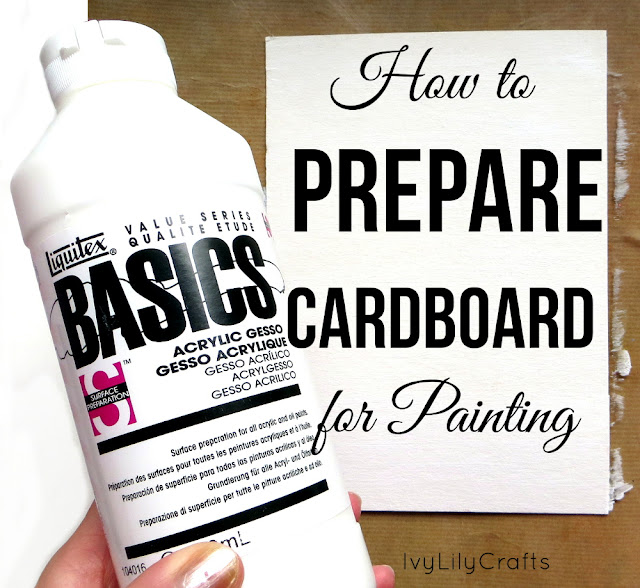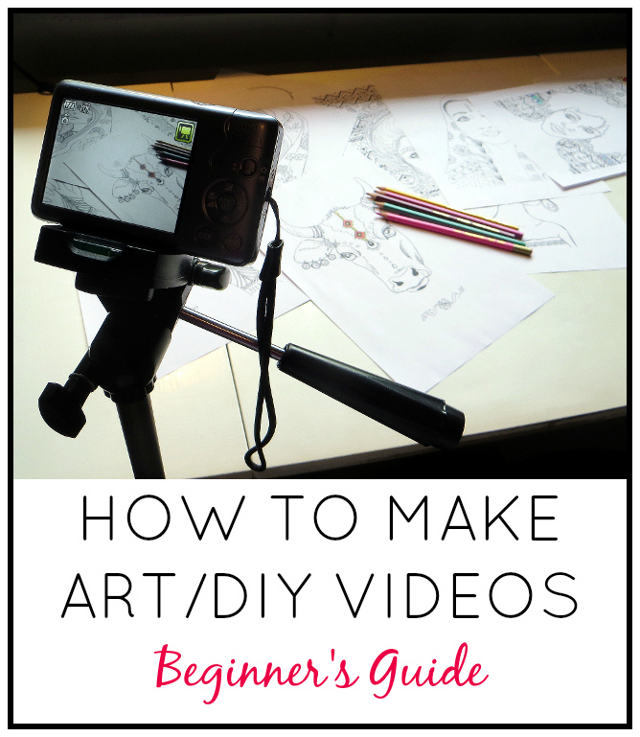How to Paint a Face with Acrylics
One of my favorite things to paint with acrylics are female portraits and I thought I'd share with you how I paint a face with acrylics including tips for the sketching stage, mixing skin tones, blending with acrylics, working in layers and painting eyes, eyebrows and lips. You can also watch my tutorial video on painting a face.
My art style is maybe somewhere between realistic and semi-realistic and this is just my method for painting a face in acrylics. It also changes from painting to painting, but hopefully the tips in this tutorial will help you in painting a portrait with acrylics.
How to Sketch for a Portrait Painting
 |
| Portrait sketch on grid paper. |
When I'm painting a face I usually start by finding a reference photo. It might be from a stock photo site or a photo I've taken myself. A free stock photo site I like to use is pexels.com. Then I use the grid method to sketch the face and get the proportions right. Here's a blog post on the grid drawing method, if you want to try it.
I then transfer the sketch onto my painting surface, which might be canvas, canvas board, watercolor paper or cardboard. There are many different ways to transfer a sketch, but I mostly use graphite transfer paper*. You can also sketch directly onto the painting surface, but if you have to erase a lot while sketching, it might not be good for the paper or canvas. (* These links are affiliate/referral links that let you support the blog at no extra cost to you.)
Suggested: How to use graphite transfer paper
How to Mix Skintones
 |
| I use a plastic paint palette, but also store leftover paints in little pots to keep the paint wet longer. |
Moving on to the actual painting. I start with the skin and then continue with the eyes, eyebrows and mouth after the skin is done.
For the skin tone, I use a warm red, yellow, browns and white and add blue for the shadows. Most of the acrylic paints I use are Crelando paints* from Lidl. They don't state which pigments they use, so I can't be sure what they are. However, comparing to my watercolors the browns would be yellow ocher, burnt sienna and, especially for darker skin tones, also umber. I don't have any formula on the amounts. I just add more yellows if the mix turns out too red or add more white if it's too dark etc.
If I mix the mid-tone first, I can then add more white to make a different mix for the highlights and add blue or umber to make a color mix for the shadows. It's better to mix a bigger amount of paint and store it in the pot you can close, if you think you might continue the painting later or just need the same color mix for touch-ups.
How to Blend Acrylics and Shade Faces
Since acrylics dry fast, I find it hard to blend the darker and lighter skin tones together and I often work in layers instead. Starting with covering the whole face in a mid-tone, I can then add layers of the darker mix for the shadows and the lighter mix for the highlights. I blend them outwards by first laying on the thick color with no water or only a little water on the brush, just the paint. Then I rinse the brush in water or use a different brush and dip it in water to make it wet and blend out the edges while the paint is still wet until there's no sharp line or edge visible. You can also try blending out the wet paint with a dry, flat or fan brush.
 |
| Dabbing on light skin tone mixture for highlights. |
Using too much water to blend out the skin tone might lead to the paint peeling off, when it's dry. I've never had this happen, but if you have that problem, you might want to get a medium to achieve that same transparency to the paint that I've done with water here. Matt medium* is transparent acrylic paint so mixing that with a color will make it less opaque and let you blend out the color gradually without using water or using less water.
 |
| Blending out the highlights. |
As for where the shadows and highlights go, you can look at the reference photo or decide on a light source and let that determine, where the light would hit and which areas would be left in shadow. I might color in the eyelids here too, or leave them white if I plan on doing a heavy eye-makeup look later on.
To set the portrait in the background better, I might also add a few strokes of the background colors into the shadows or highlights of the face and blend them out the same way I did with the skin tones to give the face a bit of a colored glow. I also do the same thing with the blush on the cheeks.
How to Paint an Eye
Once I'm pretty happy with the skin tone, I start working on the eyes, eyebrows and lips or mouth in no particular order going back and forth. I might go over the skin again in the process, too. I color in the iris with a flat color and the pupil in black and then add highlights with opaque white acrylic paint. I have a big, 250 ml bottle of white by Plus color* (link leads to a 60 ml paint bottle), because I found I use white a lot. I actually used it a lot more for crafts and stuff before I discovered gesso.
I paint circular highlights and sometimes a white line on the pupil and the iris to make the eyes look more lively. I don't leave the whites of the eyes completely white, but usually add a transparent blue tone close to the eyelids, but this could be any other color coming from the background or your character. And, of course, I add pink in the corner of the eye. You might even add a bit of a white highlight in the corner of the eye.
I leave the eyelashes for last after the eyes and eye-makeup are done and paint them on individually with the smallest brush I have, which is a synthetic size 1 round brush*.
How to Paint Eyebrows
As for the eyebrows, I color them in with a light version of the tone I want them to be and then add individual hairs over it with a darker tone and a smaller brush.
How to Paint Lips
I fill in the lips with a base color and add highlights and shadows on top of it. I often make the upper lip a bit darker since it's usually in the shade unless the light is coming from underneath. I add a soft highlight in the middle of the lower lip and add darker lines or white lines on top of it leaving the base color to show through and blending the lines into the base color in the edges. I add shadows in the corners of the mouth and between and under the lips.
List of Art Supplies
- *Graphite transfer paper https://amzn.to/2uRgKCo
- Crelando Canvas Sets from Lidl
- cardboard
- *Crelando Acrylic Paints https://amzn.to/2K1ZKQg
- *Crelando Acrylic Paints, small tubes https://amzn.to/2Gy6bJN
- *Plus Color Craft Paint https://amzn.to/2Gy6bJN
- *Acrylic Gesso http://amzn.to/2lyih7G
- *Winsor & Newton Galeria Matt Medium - 250ml https://amzn.to/2Gygptw
- *Ikea's Måla brush set https://amzn.to/2KYYwTx
- *Gold line synthetic nylon brushes https://amzn.to/2Ivr0FN
- *Crelando Round Brushes https://amzn.to/2ypEfnU
- *Palette from Ikea's Måla paint set https://amzn.to/2KYMDNh
- Easel from Lidl









Comments
Post a Comment